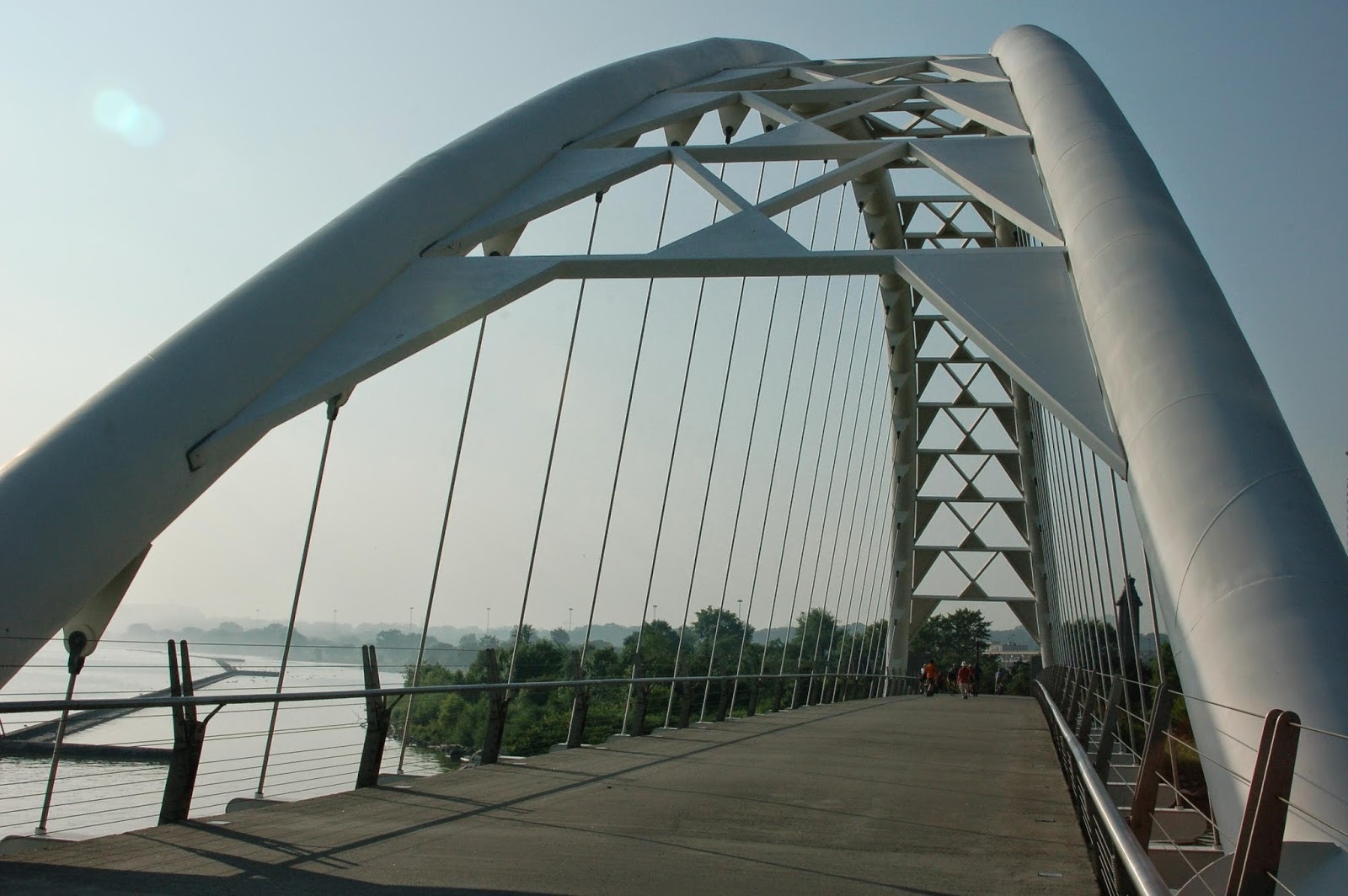
Ever wondered how arch bridges, those timeless symbols of human ingenuity, manage to stand strong, spanning vast waterways and valleys? Well, you're in for a treat! Arch bridges are marvels of engineering, blending aesthetics with functionality in a way that has captivated societies for centuries. From the ancient Roman aqueducts to modern-day steel titans, these structures have a story to tell. Arch bridges are not just about their unmistakable curves; they're about the science and history that enable them to support immense loads and withstand the test of time. Let's dive into the world of arch bridges, uncovering 21 fascinating facts that highlight their design, evolution, and significance. Ready to have your mind arch-ed with knowledge? Let's get started!
What is an Arch Bridge?
An arch bridge is a type of structure that spans a space while supporting weight, primarily using a curved, symmetrical shape. Each end of the arch is anchored, transferring the forces of the load and its own weight into the supports at either end.
Early Examples of Arch Bridges
-
One of the earliest known arch bridges, the Arkadiko Bridge in Greece, dates back to around 1300 BC. This remarkable structure is still in use today, making it one of the oldest of its kind.
-
The Romans were prolific builders of arch bridges, and many of their creations still stand. The Pont du Gard in France, built in the first century AD, is a testament to their engineering prowess, showcasing the durability and strength of arch bridges.
How Arch Bridges Work
Arch bridges work by transferring the weight of the bridge and its load into compressive forces down the curve of the arch into the abutments at either end. This design allows them to span large distances without the need for additional supports in the middle.
Materials Used in Arch Bridges
- Historically, arch bridges were constructed from stone or brick, materials that are strong under compression. Modern arch bridges, however, might use reinforced concrete or steel, allowing for longer spans and greater flexibility in design.
Famous Arch Bridges Around the World
-
The Sydney Harbour Bridge in Australia is one of the most iconic arch bridges. Opened in 1932, it is the world's largest steel arch bridge.
-
The Ponte Vecchio in Florence, Italy, is another famous arch bridge, known for the shops built along it. It's a beautiful example of medieval stone bridge engineering.
Advantages of Arch Bridges
-
Arch bridges are aesthetically pleasing, offering a timeless elegance to landscapes and cityscapes alike.
-
They are incredibly strong and durable, capable of withstanding heavy loads and adverse environmental conditions.
-
This type of bridge efficiently distributes weight, making it ideal for spans over waterways where mid-span supports are impractical.
Challenges in Building Arch Bridges
-
Constructing arch bridges requires precise engineering and craftsmanship, as the slightest miscalculation can lead to structural failure.
-
The construction of arch bridges can be more time-consuming and costly compared to other types of bridges, due to the complexity of their design and the materials needed.
Innovations in Arch Bridge Construction
-
Advances in materials science have led to the development of lighter, stronger materials for arch bridges, reducing costs and construction time.
-
Computer-aided design (CAD) software has revolutionized the planning and construction of arch bridges, allowing for more complex and efficient designs.
Environmental Impact of Arch Bridges
-
Properly designed arch bridges have minimal impact on the environment, as they often require fewer materials and do not need extensive modifications to the landscape.
-
The longevity and durability of arch bridges mean they do not need to be replaced or extensively repaired as often as other types of bridges, reducing their environmental footprint over time.
The Future of Arch Bridges
-
With ongoing advancements in engineering and materials, the future of arch bridges looks promising. New designs and technologies promise to make them even more sustainable, efficient, and aesthetically pleasing.
-
As urban areas continue to grow, the demand for innovative bridge designs that complement their surroundings and meet the needs of modern transportation will drive the evolution of arch bridges.
-
The integration of smart technologies into arch bridges could lead to structures that are not only functional but also contribute to the smart infrastructure of cities, monitoring traffic, structural health, and environmental conditions.
-
The challenge of climate change and the need for resilient infrastructure will likely influence the design of future arch bridges, making them adaptable to rising sea levels and extreme weather conditions.
-
The potential for arch bridges to serve as public spaces, incorporating pedestrian walkways, bike paths, and even green spaces, is increasingly being recognized as cities seek to enhance livability and connectivity.
-
As materials and construction techniques continue to evolve, the possibility of constructing longer, more daring spans could redefine what is possible with arch bridge design, pushing the boundaries of engineering and architecture.
-
Ultimately, the enduring appeal of arch bridges, combined with innovations in design and construction, ensures they will remain a vital and cherished part of our infrastructure for generations to come.
A Final Look at Arch Bridges
Arch bridges, with their ancient roots and modern adaptations, stand as testaments to human ingenuity in engineering. These structures, blending aesthetics and functionality, have spanned rivers, valleys, and roads for centuries, evolving with advancements in materials and design techniques. From the stone arches of the Roman era to the steel curves of contemporary designs, they've not only facilitated transportation but also added to the landscapes they inhabit. Their durability, efficiency in material use, and the ability to withstand substantial loads make them a preferred choice in many scenarios. As we've journeyed through the marvels of arch bridges, it's clear they're more than just means of getting from one side to the other; they're symbols of our persistent quest to overcome physical and technological barriers. Let's keep marveling at these architectural wonders that dot our globe, connecting us in more ways than one.
Was this page helpful?
Our commitment to delivering trustworthy and engaging content is at the heart of what we do. Each fact on our site is contributed by real users like you, bringing a wealth of diverse insights and information. To ensure the highest standards of accuracy and reliability, our dedicated editors meticulously review each submission. This process guarantees that the facts we share are not only fascinating but also credible. Trust in our commitment to quality and authenticity as you explore and learn with us.


